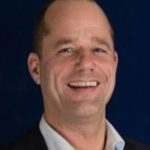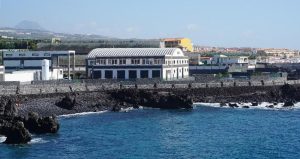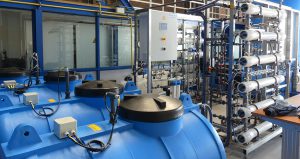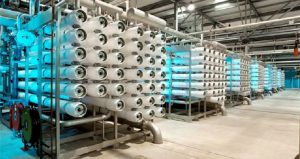Water mining to gain valuable resources from wastewater and brine
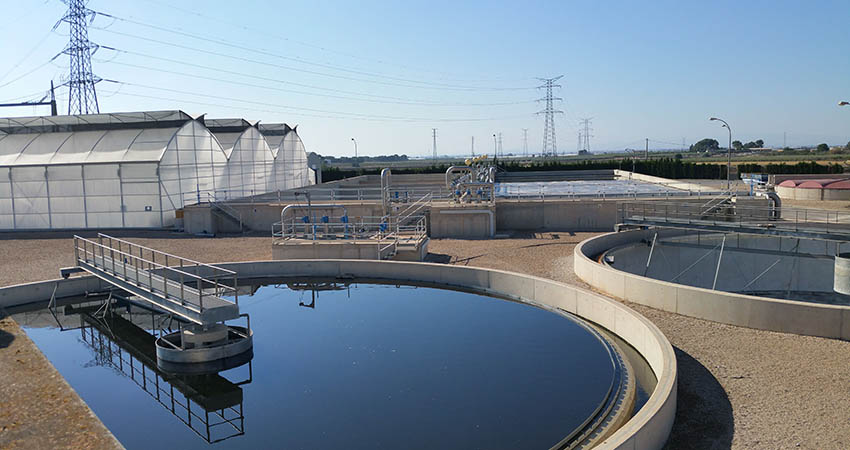
-
 Adriaan van Hooijdonk
Adriaan van Hooijdonk
Share article:
A consortium led by the Dutch University TU Delft will start on the 1st of September with a water mining project. One of the objectives is to recover nutrients, minerals, energy and water from brine and industrial and urban wastewater. The EU funded project WATER MINING will work with new combinations of water technology solutions that are already used in different Member States.
How can we transform wastewater treatment plants (WWTP’s) into integrated factories that simultaneously extract clean water, biogas and valuable raw materials from wastewater? This is the main challenge of the international WATER MINING project. In April the public-private consortium led by TU Delft received a 17 million euro grant from the European Commission. The brand new consortium consists of 38 public and private partners and another 4 third parties in twelve countries.
Biopolymer Kaumera
A good example of a raw material extracted from sewage sludge is the biopolymer Kaumera Nereda Gum. Since 2019 this biopolymer is produced out of wastewater of a Nereda wastewater treatment plant of two dairy factories in The Netherlands. The new biopolymer has a number of unique properties. It has binding and gluing properties, but can also be used a fire retardant. “Kaumera is not the only material we can extract from sewage sludge. You can obtain much more raw materials”, emphasizes Mark van Loosdrecht, research leader and professor of environmental biotechnology and water purification at TU Delft. “In this project we are also aiming to gain phosphate out of wastewater.”
Removing obstructive laws and regulations
Gaining the materials is one thing, but to actually market the extracted raw materials a number of obstacles still need to be removed. That is why WATER MINING also is focusing on removing public concerns and laws and regulations that can hinder large-scale application. Patricia Osseweijer, professor of biotechnology and society at TU Delft and coordinator of the international research project is responsible for this part of the project.
Adapt legislation
One of the challenges is to ensure that new legislation and regulations are much better aligned with the intended circular economy of the European Commission. Current legislation is still made for a linear economy in which raw materials eventually become waste. To market raw materials from sewage sludge is a complicated legal puzzle. That is why adjustment of the waste regulations is crucial. In the future clean raw materials from sewage sludge should no longer carry the stigma of waste. The project therefore fits in well with the recently published European Green Deal.
Connecting water technology solutions
WATER MINING also focuses on the upscaling, integration and connection of various stand-alone water technology solutions that have already been researched in Europe, like for example the Zero Brine project. Since 2017, 22 partners from research institutes, SMEs, construction companies and end users from ten countries have been investigating solutions to reduce industrial salt wastewater flows by recovering and reusing minerals and clean water. TU Delft also coordinates this project.
Industrial salt chain
The project WATER MINING will provide six large-scale demo installations in various countries. Two of the demo installation will be realised in the Netherlands. Dimitris Xevgenos, who is part of the coordinating team tells more about these installations. “In the Dutch industrial harbour Botlek starts an industrial demo project with chemical company and chlorine producer Nouryon and their customers Hexion, Huntsman and Shin-Etsu. The aim of this project is a better integration of the chlorine-alkali cluster.” Nouryon now uses salt from Delfzijl for chlorine production, but this raw material can also be extracted from the wastewater flows of their customers. These customers are now treating their wastewater for discharge against very high costs. “The idea is to use that money to extract the salt, so new salt is no longer needed.” The demo project also focuses on the concept of leasing chemicals. It means Nouryons customers will lease the chlorine and return it to Nouryon after use. In this way, the partners not only divide the costs, but also the revenues. “Together the partners can finance the high pressure oxidation technology required for the project,” says Xevgenos. The urban projects are focusing on the recovery of Kaumera and phosphate.
Demo installations sea mining
The sea mining projects take place in Spain and Italy. A pilot will start on the Italian island Lampedusa. The brine stream that is the result of the desalination of seawater is treated with residual heat from an energy producer and gain salt and fresh water through evaporation. Brine flows are threatening the ecosystem in the Mediterranean. A similar project is taking place in Almeria in the South of Spain. Instead of residual heat this demo installation makes use of solar energy. Furthermore, there will be four demo installations for urban mining. In Utrecht, Barcelona, Faro and Cyprus. In Utrecht and Faro the focus is on the recovery and comparison of Kaumera. In Barcelona it is mainly about energy extraction. In Cyprus the main goals are to recover phosphate and zero liquid discharge.

